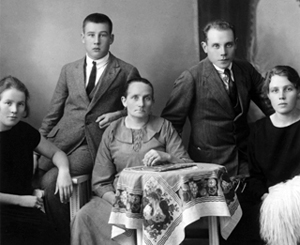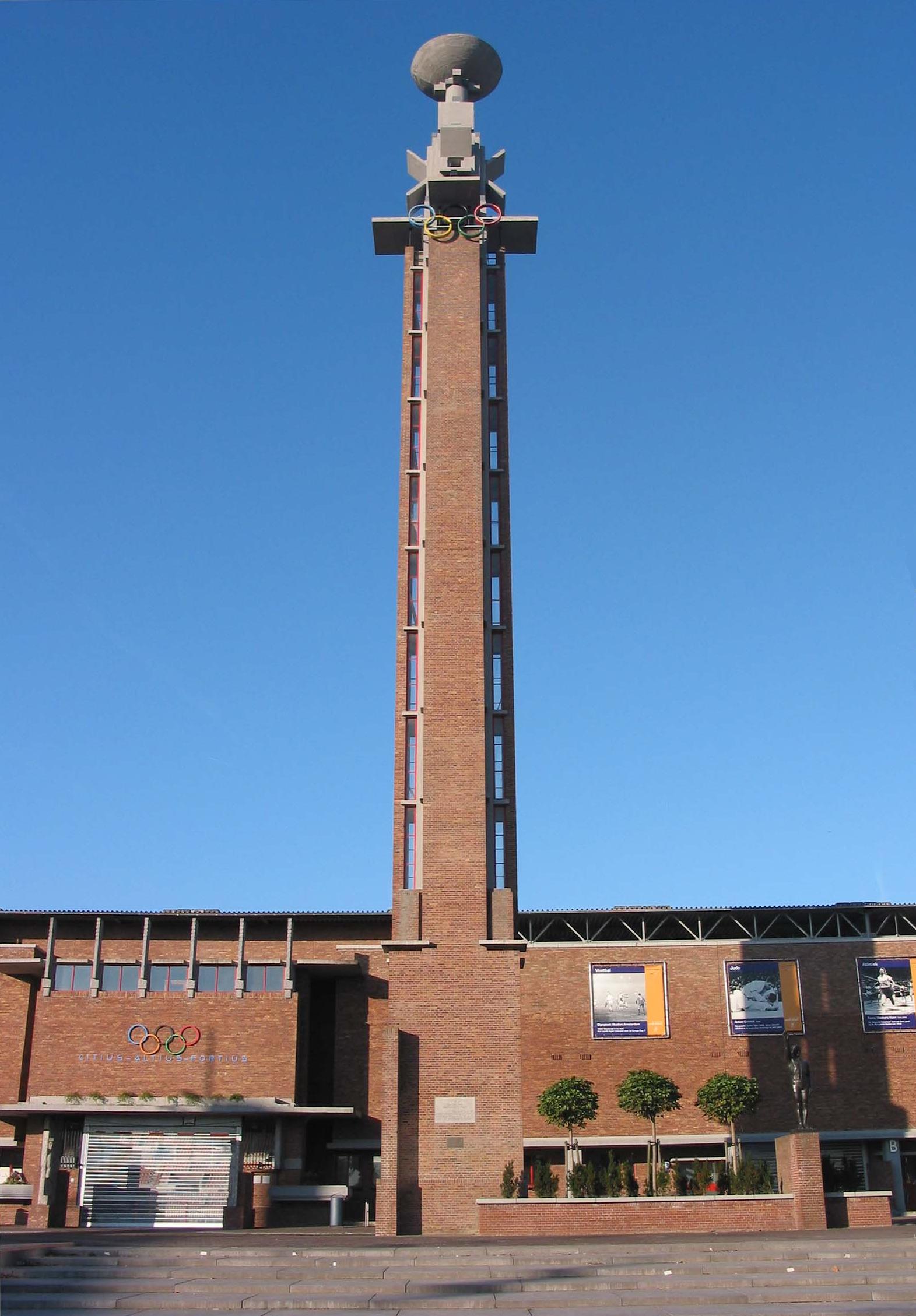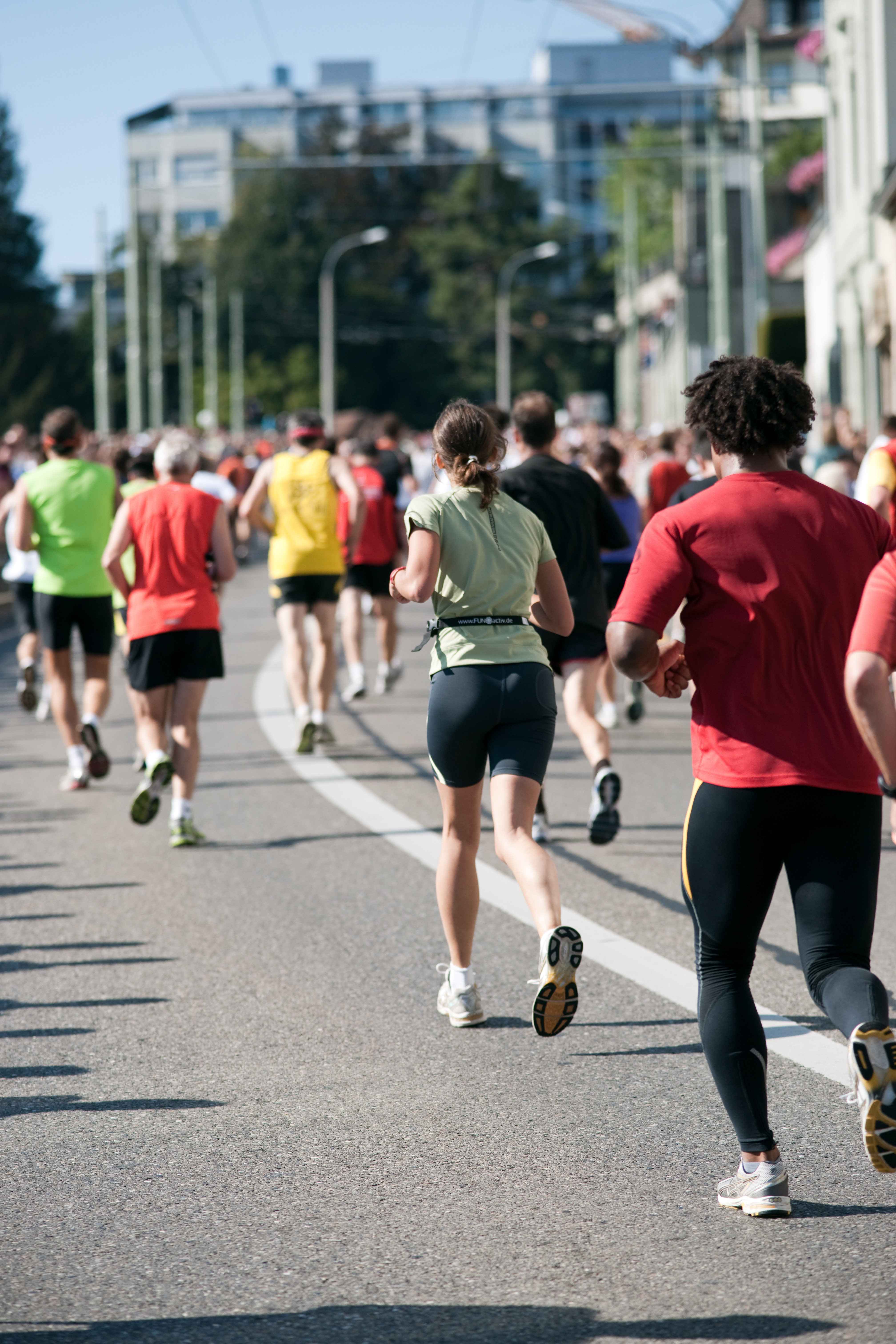|
Athletics At The 1928 Summer Olympics – Men's 10,000 Metres
The men's 10,000 metres The 10,000 metres or the 10,000-metre run is a common long-distance track running event. The event is part of the athletics programme at the Olympic Games and the World Athletics Championships, and is common at championship level events. The ra ... event was part of the track and field athletics programme at the 1928 Summer Olympics. The competition was held on Sunday, July 29, 1928. Twenty-four long-distance runners from twelve nations competed. Records These were the standing world and Olympic records (in minutes) prior to the 1928 Summer Olympics. Paavo Nurmi set a new Olympic record with 30:18.8 minutes. Results Only a final race was held. References External links Official Olympic Report* {{DEFAULTSORT:Athletics At The 1928 Summer Olympics - Men's 10000 Metres 10000 metres 10,000 metres at the Olympics Men's events at the 1928 Summer Olympics ... [...More Info...] [...Related Items...] OR: [Wikipedia] [Google] [Baidu] |
Olympic Stadium (Amsterdam)
The Olympic Stadium (Dutch: ''Olympisch Stadion'', ) is a sporting venue which was used as the main stadium for the 1928 Summer Olympics in Amsterdam. The venue is currently used mostly for athletics, other sports events and concerts. When completed, the stadium had a capacity of 31,600. Following the completion of the rival De Kuip stadium in Rotterdam in 1937, the Amsterdam authorities increased the capacity of the Olympic Stadium to 64,000 by adding a second ring to the stadium. In 1987 the stadium was listed as a national monument. AFC Ajax used the Olympic Stadium for international games until 1996, when the Amsterdam Arena, since 2018 renamed Johan Cruyff Arena, was completed. Renovation started in 1996, and the stadium was refurbished into the original construction of 1928. The second ring of 1937 was removed, reducing capacity to 22,288, and the stadium was made suitable for track and field competitions again. Since 2005, the stadium is home to a sports museum, the ... [...More Info...] [...Related Items...] OR: [Wikipedia] [Google] [Baidu] |
Paavo Nurmi
Paavo Johannes Nurmi (; 13 June 1897 – 2 October 1973) was a Finnish middle-distance and long-distance runner. He was called the "Flying Finn" or the "Phantom Finn", as he dominated distance running in the 1920s. Nurmi set 22 official world records at distances between 1500 metres and 20 kilometres, and won nine gold and three silver medals in his 12 events in the Summer Olympic Games. At his peak, Nurmi was undefeated for 121 races at distances from 800 m upwards. Throughout his 14-year career, he remained unbeaten in cross country events and the 10,000 metres. Born into a working-class family, Nurmi left school at the age of 12 to provide for his family. In 1912, he was inspired by the Olympic feats of Hannes Kolehmainen and began developing a strict training program. Nurmi started to flourish during his military service, setting Finnish records in athletics en route to his international debut at the 1920 Summer Olympics. After winning a silver medal in the 5000 m, ... [...More Info...] [...Related Items...] OR: [Wikipedia] [Google] [Baidu] |
Ville Ritola
Vilho "Ville" Eino Ritola (18 January 1896 – 24 April 1982) was a Finnish long-distance runner. Known as one of the "Flying Finns", he won five Olympic gold medals and three Olympic silver medals in the 1920s. He holds the record of winning most athletics medals at a single Games – four golds and two silvers in Paris 1924 - and ranks second in terms of most athletics gold medals at a single Games. Childhood and emigration to the United States Ritola's parents, Johannes Ritola (1851–1944) and Serafia Gevär (1863–1919), were farmers in western Finland near Seinäjoki. He was born in Peräseinäjoki, Finland. He was the 14th child in his family and had altogether 19 siblings, five of whom died in infancy. Six of the children were from his father's first marriage, 14 from the second, including Ville. In 1913 he followed seven of his siblings and emigrated to the United States to work as a carpenter. There he started training in 1919 when he was already 23 years old. La ... [...More Info...] [...Related Items...] OR: [Wikipedia] [Google] [Baidu] |
Edvin Wide
Emil Edvin Wide (22 February 1896 – 19 June 1996) was a Swedish middle-distance and long-distance runner. Biography Born in Finland as Emil Edvin Hermansson, Wide moved to Sweden in 1918. He competed for Sweden at the 1920 Summer Olympics in the 3000 metre team event, winning a bronze medal, together with Eric Backman and Sven Lundgren. At the 1924 Olympics he won a silver medal in the 10,000 m behind Ville Ritola of Finland. He also finished third in the 5,000 m, behind Ville Ritola and Paavo Nurmi. At the 1928 Summer Olympics the 5,000 metre medals went to the same people as in 1924, only the Finns swapped medals, leaving Edvin with his third Olympic bronze medal. He then finished behind the same two yet again for the third time in Olympic competition to win the bronze medal in the 10,000 metres. Nationally Wide won 12 Swedish titles: five in the cross country (1922–26), four in the 1,500 m and three in the 5,000 m, and held Swedish records over 1,500 m, 5,000 m and 1 ... [...More Info...] [...Related Items...] OR: [Wikipedia] [Google] [Baidu] |
Athletics At The 1924 Summer Olympics – Men's 10,000 Metres
The men's 10,000 metres event was part of the track and field athletics programme at the 1924 Summer Olympics. The competition was held on Sunday, July 6, 1924. Paavo Nurmi the greatest long-distance runner at that time did not compete in this race, as the Finnish officials asked him not to start in this event. They thought he was entered in too many competitions. Only a few weeks after the Olympics on August 31 Nurmi set a new world record with 30:06.2 in Kuopio. As for all other races the track was 500 metres in circumference. The exact number of starters is unknown, but photographs show around 35 competitors. At least 33 - maybe 36 - long-distance runners from 16 nations competed. Records These were the standing world and Olympic records (in minutes) prior to the 1924 Summer Olympics. Ville Ritola Vilho "Ville" Eino Ritola (18 January 1896 – 24 April 1982) was a Finnish long-distance runner. Known as one of the "Flying Finns", he won five Olympic gold medals and ... [...More Info...] [...Related Items...] OR: [Wikipedia] [Google] [Baidu] |
Athletics At The 1932 Summer Olympics – Men's 10,000 Metres
The men's 10,000 metres long distance event at the 1932 Summer Olympics took place on July 31 at the Los Angeles Memorial Coliseum The Los Angeles Memorial Coliseum (also known as the L.A. Coliseum) is a multi-purpose stadium in the Exposition Park neighborhood of Los Angeles, California. Conceived as a hallmark of civic pride, the Coliseum was commissioned in 1921 as a me .... Results The race was contested in a final only format, no heats. Final Key: OR = Olympic record; DNF = did not finish References {{DEFAULTSORT:Athletics at the 1932 Summer Olympics - Men's 10,000 metres Athletics at the 1932 Summer Olympics 10,000 metres at the Olympics Men's events at the 1932 Summer Olympics ... [...More Info...] [...Related Items...] OR: [Wikipedia] [Google] [Baidu] |
10,000 Metres
The 10,000 metres or the 10,000-metre run is a common long-distance track running event. The event is part of the athletics programme at the Olympic Games and the World Athletics Championships, and is common at championship level events. The race consists of 25 laps around an Olympic-sized track. It is less commonly held at track and field meetings, due to its duration. The 10,000-metre track race is usually distinguished from its road running counterpart, the 10K run, by its reference to the distance in metres rather than kilometres. The 10,000 metres is the longest standard track event, approximately equivalent to or . Most of those running such races also compete in road races and cross country events. Added to the Olympic programme in 1912, athletes from Finland, nicknamed the " Flying Finns", dominated the event until the late 1940s. In the 1960s, African runners began to come to the fore. In 1988, the women's competition debuted in the Olympic Games. Official records ... [...More Info...] [...Related Items...] OR: [Wikipedia] [Google] [Baidu] |
Athletics At The 1928 Summer Olympics
At the 1928 Summer Olympics in Amsterdam, 27 athletics events were contested. The competition was held on a 400-meter track and would become the standard for athletics tracks in the future. For the first time, women's events in athletics were included in the Olympic Games program. There was a total of 706 participants from 40 countries competing. Medal summary Men Women Records broken During the 1928 Summer Olympic Games 9 new world records were set in the athletics events. New Olympic records were set in 16 of the 27 events. Men's world records Women's world records Participating nations 706 athletes from 40 nations competed. Lithuania and Romania competed in athletics for the first time. Bulgaria, Egypt, Malta, Panama, Rhodesia, and Uruguay were the only six nations not to compete in athletics. References1928 Summer Olympics results: athletics from https://www.sports-reference.com/; retrieved 2010-03-01. Official Olympic Report {{DEFAULTSORT:Athletics At ... [...More Info...] [...Related Items...] OR: [Wikipedia] [Google] [Baidu] |
1928 Summer Olympics
The 1928 Summer Olympics ( nl, Olympische Zomerspelen 1928), officially known as the Games of the IX Olympiad ( nl, Spelen van de IXe Olympiade) and commonly known as Amsterdam 1928, was an international multi-sport event that was celebrated from 28 July to 12 August 1928 in Amsterdam, Netherlands. The city of Amsterdam had previously bid for the 1920 and 1924 Olympic Games, but was obliged to give way to war-torn Antwerp in Belgium for the 1920 Games and Pierre de Coubertin's Paris for the 1924 Games. The only other candidate city for the 1928 Olympics was Los Angeles, which would eventually be selected to host the Olympics four years later. In preparation for the 1932 Summer Olympics, the United States Olympic Committee reviewed the costs and revenue of the 1928 Games. The committee reported a total cost of US$1.183 million with receipts of US$1.165 million, giving a negligible loss of US$18,000, which was a considerable improvement over the 1924 Games. The Unit ... [...More Info...] [...Related Items...] OR: [Wikipedia] [Google] [Baidu] |
Long-distance Track Event
Long-distance running, or endurance running, is a form of continuous running over distances of at least . Physiologically, it is largely aerobic in nature and requires stamina as well as mental strength. Within endurance running comes two different types of respiration. The more prominent side that runners experience more frequently is aerobic respiration. This occurs when oxygen is present, and the body is able to utilize oxygen to help generate energy and muscle activity. On the other side, anaerobic respiration occurs when the body is deprived of oxygen, and this is common towards the final stretch of races when there is a drive to speed up to a greater intensity. Overall, both types of respiration are used by endurance runners quite often, but are very different from each other. Among mammals, humans are well adapted for running significant distances, and particularly so among primates. The capacity for endurance running is also found in migratory ungulates and a ... [...More Info...] [...Related Items...] OR: [Wikipedia] [Google] [Baidu] |
Kuopio
Kuopio (, ) is a Finnish city and municipality located in the region of Northern Savonia. It has a population of , which makes it the most populous municipality in Finland. Along with Joensuu, Kuopio is one of the major urban, economic, and cultural hubs of Eastern Finland. At the end of 2018, its urban area had a population of 89,307. Kuopio has a total area of , of which is water and half is forest. Though the city's population is a spread-out , the city's urban areas are populated comparably densely (urban area: 1,618 /km²), making Kuopio Finland's second-most densely populated city. Kuopio is known nationwide as one of the most important study cities and centers of attraction and growth, but on the other hand, the history of Kuopio has been characterized by several municipality mergers since 1969, as a result of which Kuopio now includes much countryside; Kuopio's population surpassed 100,000 when the town of Nilsiä joined the city at the beginning of 2013, and when ... [...More Info...] [...Related Items...] OR: [Wikipedia] [Google] [Baidu] |
Finland
Finland ( fi, Suomi ; sv, Finland ), officially the Republic of Finland (; ), is a Nordic country in Northern Europe. It shares land borders with Sweden to the northwest, Norway to the north, and Russia to the east, with the Gulf of Bothnia to the west and the Gulf of Finland across Estonia to the south. Finland covers an area of with a population of 5.6 million. Helsinki is the capital and largest city, forming a larger metropolitan area with the neighbouring cities of Espoo, Kauniainen, and Vantaa. The vast majority of the population are ethnic Finns. Finnish, alongside Swedish, are the official languages. Swedish is the native language of 5.2% of the population. Finland's climate varies from humid continental in the south to the boreal in the north. The land cover is primarily a boreal forest biome, with more than 180,000 recorded lakes. Finland was first inhabited around 9000 BC after the Last Glacial Period. The Stone Age introduced several differ ... [...More Info...] [...Related Items...] OR: [Wikipedia] [Google] [Baidu] |






